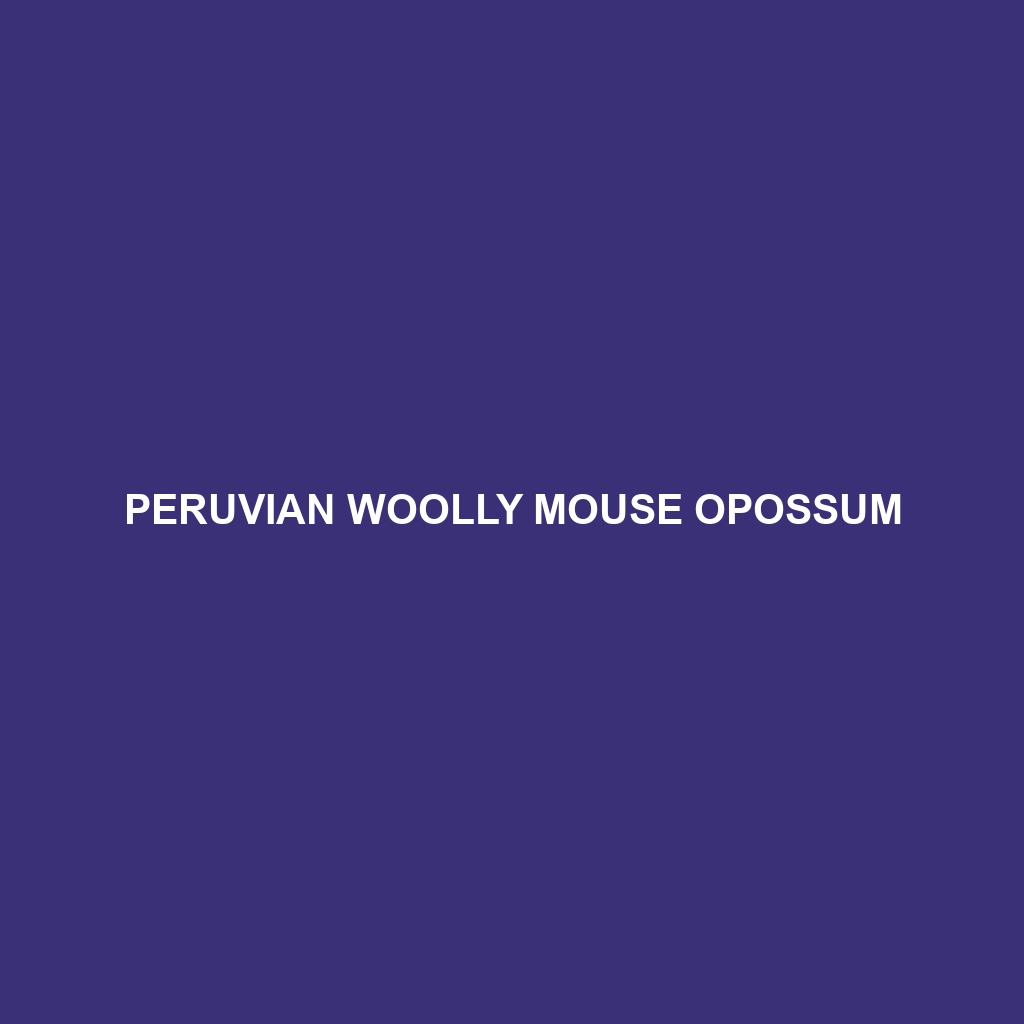Anthony’s Woolly Mouse Opossum: Detailed Description and Attributes
Anthony’s Woolly Mouse Opossum (Marmosa anthonyi) is a small, nocturnal marsupial native to South America. Known for its soft, woolly fur and agile movements, this elusive creature adds a touch of mystery to the rainforests and woodlands it inhabits. Despite its small size, Anthony’s Woolly Mouse Opossum plays a significant role in the ecosystem, showcasing unique adaptations that make it an intriguing subject of study for scientists and nature enthusiasts alike.
Physical Characteristics:
Size:
Anthony’s Woolly Mouse Opossum is relatively small, with an average body length of 10 to 14 centimeters (4 to 5.5 inches) excluding the tail, which itself measures around 15 to 20 centimeters (6 to 8 inches). They typically weigh between 20 to 40 grams (0.7 to 1.4 ounces).
Coloration:
The fur of Anthony’s Woolly Mouse Opossum is one of its most distinguishing features. It is dense, soft, and woolly, providing excellent insulation. The dorsal (upper) side of the body is usually a grayish-brown to reddish-brown color, while the ventral (under) side is lighter, often a creamy white or pale grey.
Special Features:
Tail: The tail is prehensile, meaning it can grasp and hold objects, which aids in climbing. It is furred at the base and slightly scales towards the tip.
Ears: Large and rounded, their ears are highly sensitive and aid in detecting sounds in their nocturnal environment.
Eyes: They have large, dark eyes that enhance their night vision, crucial for their nocturnal lifestyle.
Behavior:
Social Interactions:
Anthony’s Woolly Mouse Opossum is generally solitary, with individuals coming together only during the breeding season. They are territorial animals, often marking their territories with scent glands.
Feeding Habits:
These opossums are omnivorous, with a diet that includes insects, fruits, nectar, and small vertebrates. Their agile movements and prehensile tail allow them to navigate through trees and shrubs in search of food.
Ecological Roles:
As both predator and prey, Anthony’s Woolly Mouse Opossum plays a vital role in the ecosystem. They help control insect populations and disperse seeds through their fruit consumption, aiding in forest regeneration.
Habitat:
Range:
Anthony’s Woolly Mouse Opossum is found in the tropical and subtropical forests of South America, particularly in countries like Ecuador, Peru, and potentially northern regions of Brazil.
Preferred Habitats:
They prefer dense, humid forests and woodlands, often occupying the understory and lower canopy layers. They are adept climbers and utilize the forest’s vertical space to evade predators and forage for food.
Adaptations:
Nocturnal Lifestyle:
Being nocturnal, they have developed keen senses of hearing and sight to navigate and hunt in the dark.
Prehensile Tail:
Their prehensile tail is an adaptation for arboreal life, allowing them to grasp branches and stabilize themselves while foraging or moving through the trees.
Camouflaged Fur:
Their coloration provides camouflage against the forest floor and foliage, protecting them from predators.
Conservation Status:
Currently, there is limited data on the exact population numbers of Anthony’s Woolly Mouse Opossum. However, habitat destruction due to deforestation poses a significant threat. Conservation efforts are essential to preserve their natural habitats and ensure their survival.
Fun Facts:
Despite being marsupials, Anthony’s Woolly Mouse Opossums do not have a true pouch. Instead, the young cling to the mother’s teats and later ride on her back.
They are named after Harold Elmer Anthony, an American mammalogist who made significant contributions to the study of mammals.
These opossums can enter a state of torpor, reducing their metabolic rate to conserve energy during periods of food scarcity.
Anthony’s Woolly Mouse Opossum is a remarkable example of nature’s adaptability and diversity, offering valuable insights into the complex ecosystems of South American forests. Whether you are a researcher, conservationist, or simply an animal enthusiast, this fascinating creature is sure to capture your interest.
